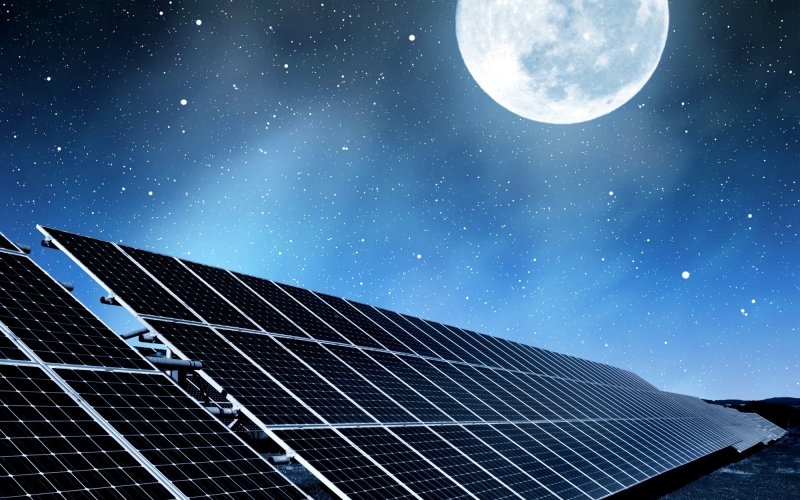A photovoltaic panel generates electricity from the incident light, so in theory it could also generate electricity at night from the light of the stars and the moon. Or from the glow of street lamps. And it could also produce electricity in the shade, because when it's cloudy, it's not completely dark after all. There's actually quite a lot of light and photovoltaics could use that. Would that work?
A photovoltaic cell produces electricity after the impact of any photon with a suitable wavelength and does not care if it came directly from the sun, bounced off a wall or the moon or flew out of a light bulb. In all cases, the photon induces a photoelectric effect, which leads to a voltage at the output from the photovoltaic cell. The more photons that fall on the cell at once, the more electricity it produces, so it is advantageous for the cell to be illuminated as much as possible. Ideally by direct sunlight. On the other hand, it is also possible to use other light as well.
Lighting with light bulbs should be rejected outright. A light bulb needs electricity and only a part of it turns into light, the rest is uselessly lost as heat. So because of this, a panel lit by a light bulb will produce less electricity than the light bulb used.
Lighting by reflected sunlight is already used by bifacial photovoltaic panels. While classic panels have an impermeable layer on the back, double-sided panels are glazed on both sides, so light can fall on them from above and below. However, how much energy the shaded part produces depends on many circumstances. If we fasten such a panel close to a roof, it will be almost dark under it and, moreover, basically nothing will be produced. But if it is placed at a suitable height above a white surface, the back side of the panel can produce up to 30 percent of the power of the illuminated part. Such a panel can also be placed vertically with an east-west orientation. It will have two peaks of electricity production, one in the morning and one in the evening, which is even more in line with the usual pattern of energy consumption in households.
As for the light of the stars and the moon, two ways of using it are being considered. The first involves focusing diffused and weak light using lenses onto a small solar cell. The concentration photovoltaic panels already exists, but they are used in direct sunlight. Some types of photovoltaic cells convert light into electricity with higher efficiency when the incidental light is sufficiently intense. In the case of low light at night, there is no doubt that the resulting panel would have to be very large to produce a reasonable amount of power. As a second method, work is being done on the use of infrared radiation, which the panel heated during the day emits into the cold night. Even in this case, it is a source with low energy density. But it could, for example, power something small, like a lamp above a pedestrian crossing.
Want to ask something?
Send us an e-mail with the subject “Physics mysteries” to the address:
We can't wait to tackle your interesting questions!





